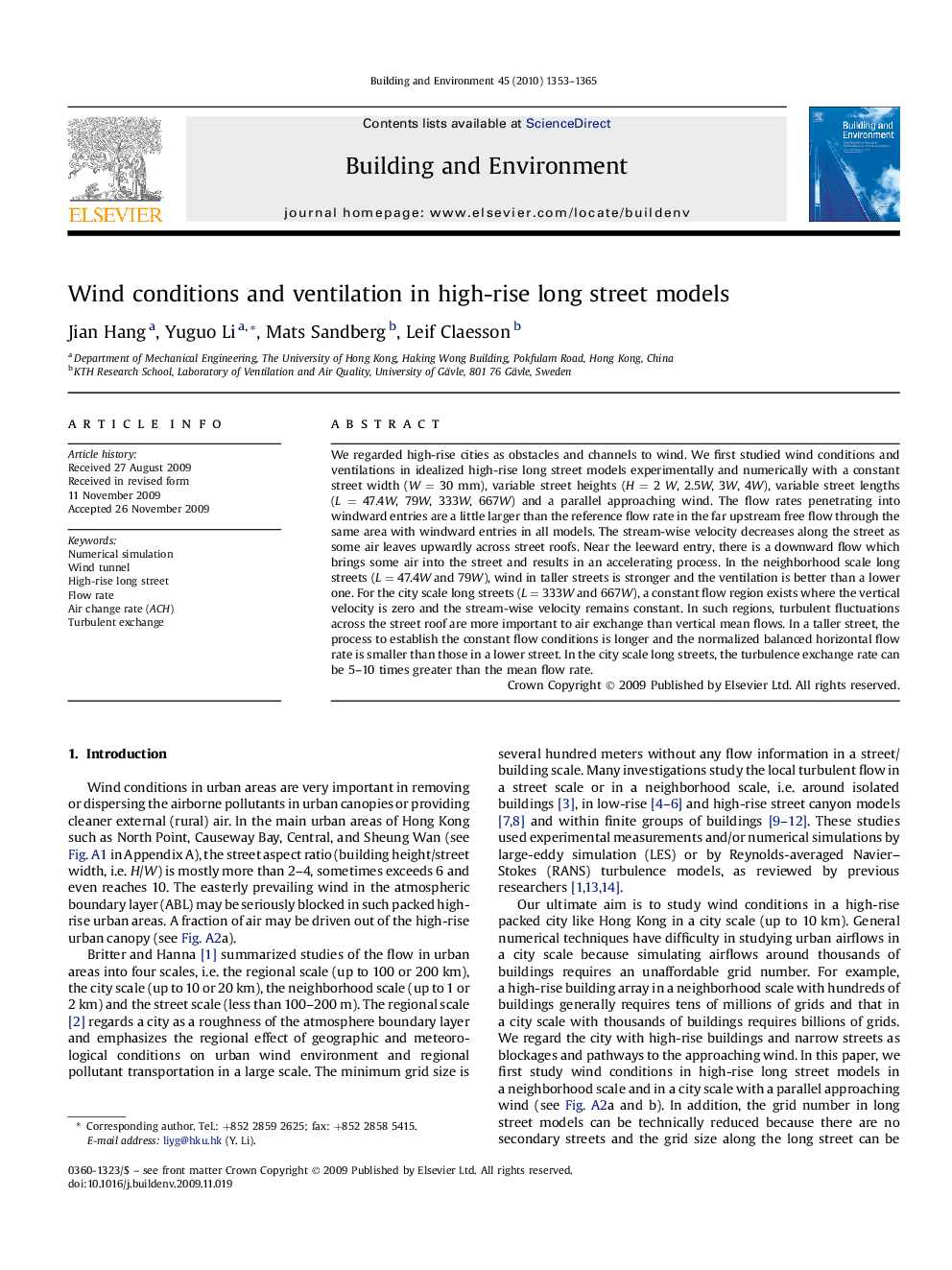| Article ID | Journal | Published Year | Pages | File Type |
|---|---|---|---|---|
| 249038 | Building and Environment | 2010 | 13 Pages |
We regarded high-rise cities as obstacles and channels to wind. We first studied wind conditions and ventilations in idealized high-rise long street models experimentally and numerically with a constant street width (W = 30 mm), variable street heights (H = 2 W, 2.5W, 3W, 4W), variable street lengths (L = 47.4W, 79W, 333W, 667W) and a parallel approaching wind. The flow rates penetrating into windward entries are a little larger than the reference flow rate in the far upstream free flow through the same area with windward entries in all models. The stream-wise velocity decreases along the street as some air leaves upwardly across street roofs. Near the leeward entry, there is a downward flow which brings some air into the street and results in an accelerating process. In the neighborhood scale long streets (L = 47.4W and 79W), wind in taller streets is stronger and the ventilation is better than a lower one. For the city scale long streets (L = 333W and 667W), a constant flow region exists where the vertical velocity is zero and the stream-wise velocity remains constant. In such regions, turbulent fluctuations across the street roof are more important to air exchange than vertical mean flows. In a taller street, the process to establish the constant flow conditions is longer and the normalized balanced horizontal flow rate is smaller than those in a lower street. In the city scale long streets, the turbulence exchange rate can be 5–10 times greater than the mean flow rate.
